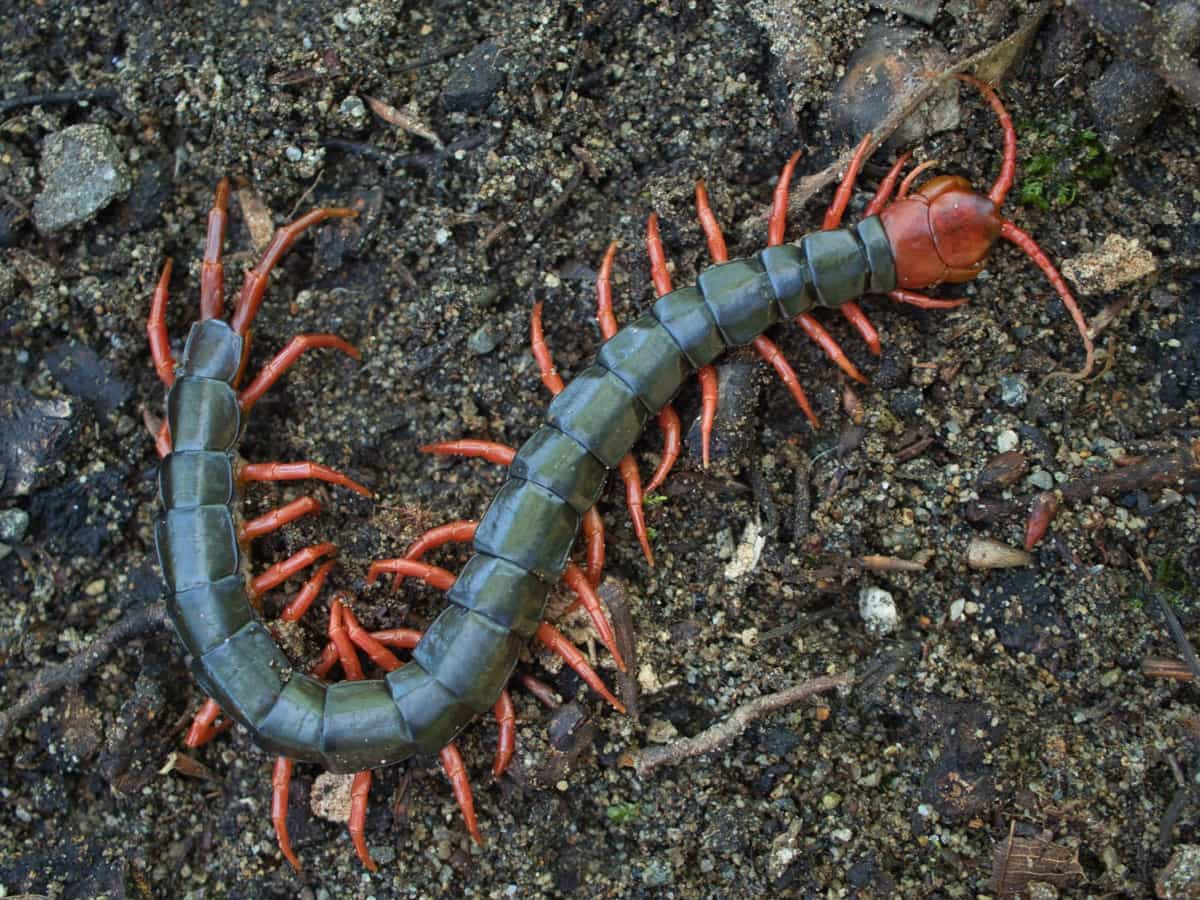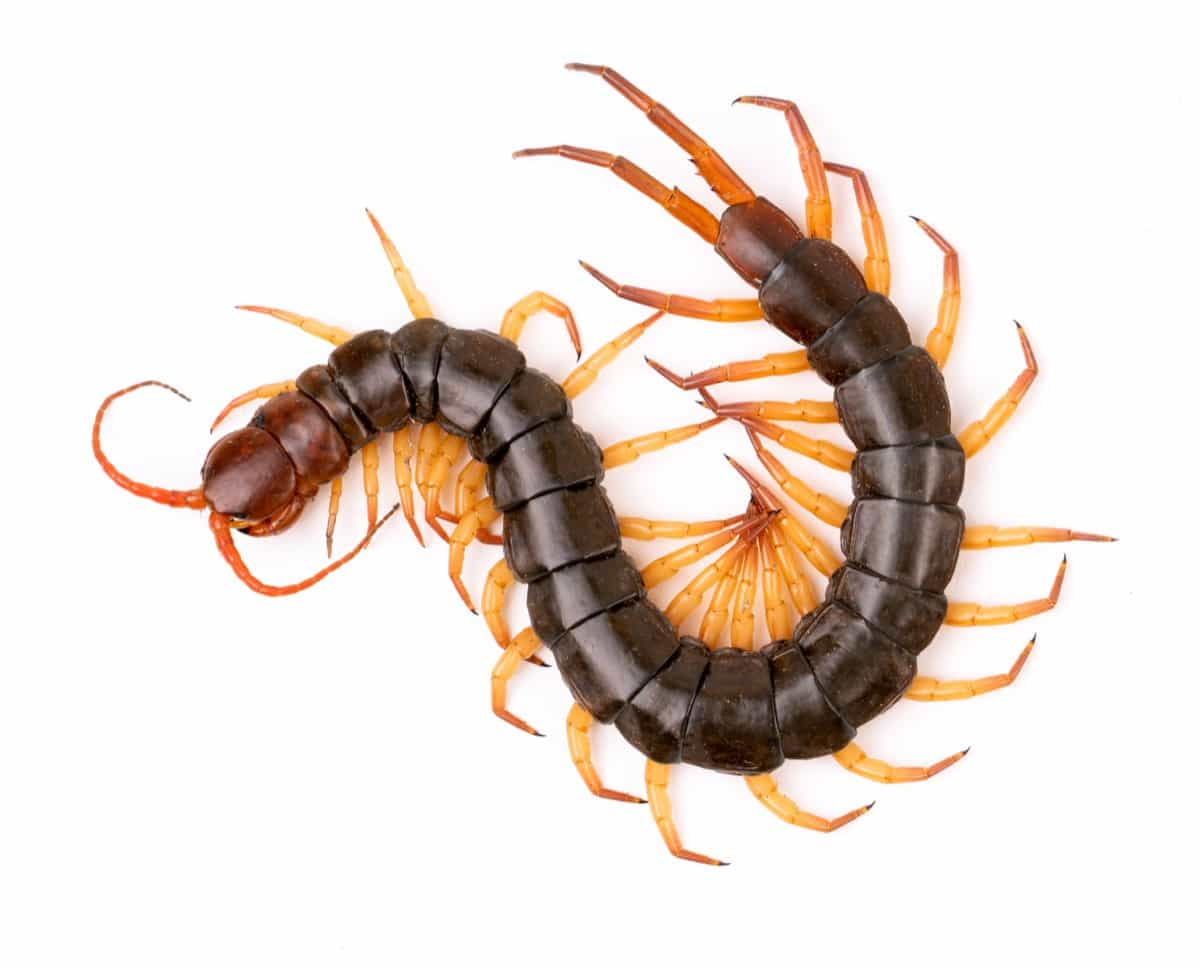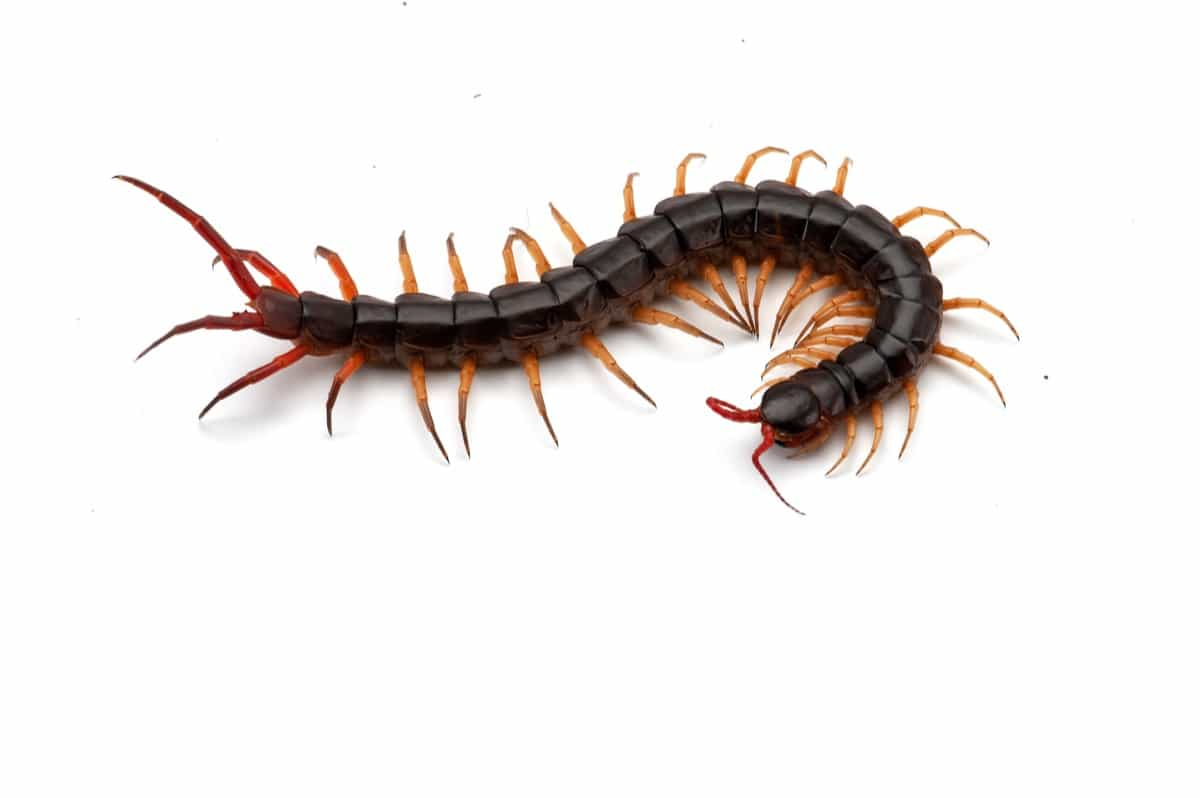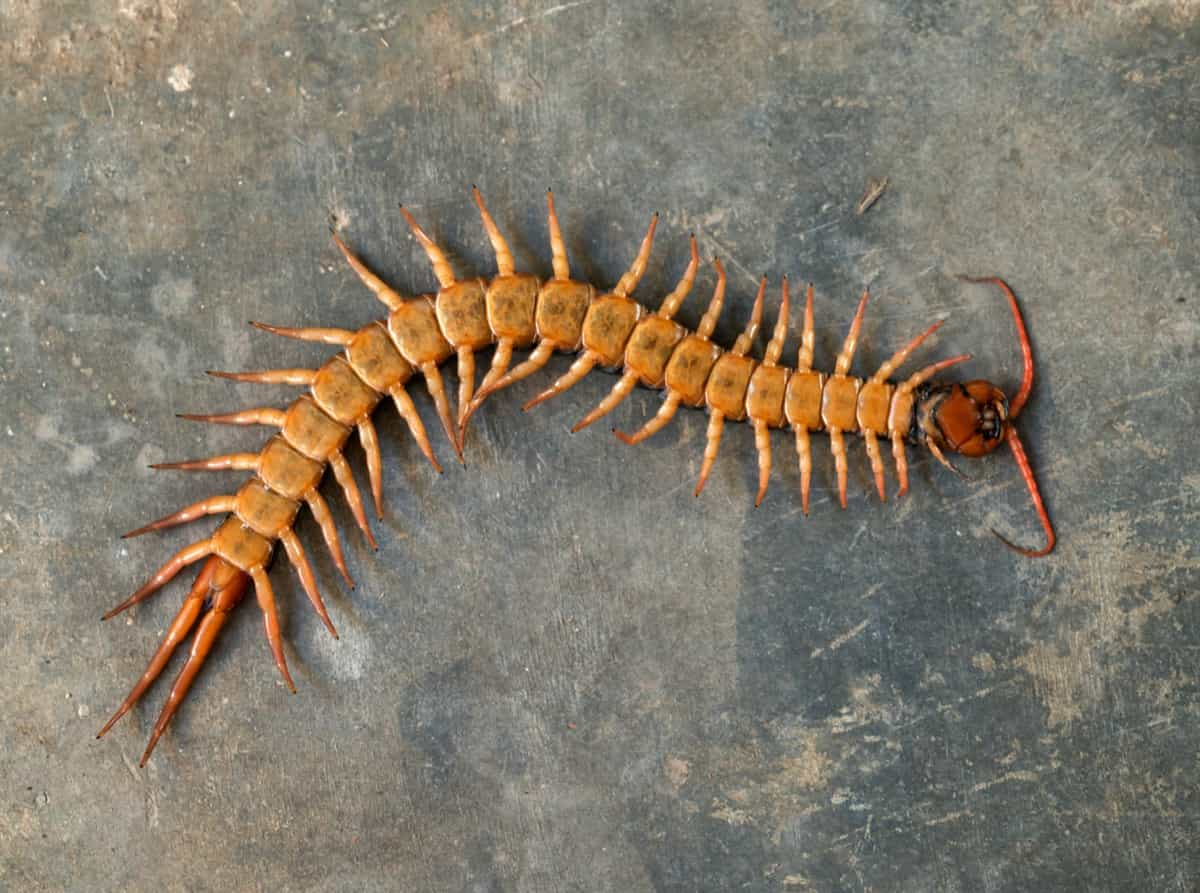
How to Get Rid of House Centipedes
Identify and Understand the Habits of House Centipedes
House centipedes are common household insects that have many pairs of legs and can run very fast. They are usually about an inch or two long and have dark brown or yellow bodies with darker stripes or markings. They have a pair of long antennae on their heads and a pair of pincer-like legs near their mouths that they use to inject venom into their prey. They also have a pair of long legs at the end of their bodies that look like antennae, which can confuse their predators.
House centipedes are nocturnal and prefer to hide in damp and cool places during the day, such as basements, closets, bathrooms, potted plants, under the bark of trees, or in the soil. They come out at night to hunt for other small arthropods, such as cockroaches, silverfish, spiders, bed bugs, termites, and carpet beetle larvae. They are beneficial to humans because they help control these pests, but they can also be alarming to see in your home.
House centipedes have three life stages: egg, larva, and adult. They usually spend the winter outdoors and lay their eggs in summer. Female house centipedes can lay up to 35 eggs over a few days in the soil or under rocks. The newly hatched larvae have four pairs of legs and grow more pairs as they molt six times before becoming adults.
Seal Entry Points
One of the best ways to prevent house centipedes from entering your home is to seal any cracks or gaps in the walls, floors, windows, doors, or foundation. You can use caulk, foam, mesh, or weather stripping to close these entry points. You should also inspect your pipes, vents, drains, and faucets for leaks or damage and repair them as soon as possible. These can create moisture and attract house centipedes and their prey.
Eliminate Their Food Source
Another effective way to deter house centipedes is to controled by removing their food source by getting rid of other pests in your home. You can use sticky traps, glue boards, or insecticides to catch or kill cockroaches, silverfish, spiders, and other arthropods that house centipedes feed on. Store your food in sealed containers, clean up any crumbs or spills, and dispose of your garbage regularly. These will reduce the availability of food for house centipedes and their prey.
In case you missed it: How to Use Neem Oil on Houseplants: Best Way to Get Rid of Bugs Naturally from Houseplants

Use Traps and Baits
If you want to catch or kill house centipedes in your home, you can use traps and baits that are designed for them or other insects. For example, you can use sticky traps or glue boards that have a pheromone or a food attractant that lures house centipedes into them. You can also use insecticide baits that contain boric acid, pyrethrin, or fipronil that kill house centipedes when they ingest them. It would help if you placed these traps and baits in dark and damp areas where house centipedes are likely to hide or roam.
Implement a Regular Cleaning Routine
Keeping your home clean and dry is another important step to prevent house centipedes from infesting your home. You should vacuum your floors, carpets, furniture, and curtains regularly to remove any dust, dirt, debris, or eggs that house centipedes or their prey may leave behind. You should also mop your floors and wipe your surfaces with a disinfectant to kill any bacteria or fungi that may grow in moist areas. You should also declutter your home and remove any unnecessary items that may provide shelter for house centipedes or their prey.
Use Natural Repellents
- Diatomaceous earth: Fine powder made from fossilized algae that dehydrates and kills house centipedes when they come into contact with it. You can sprinkle it around the perimeter of your home or in areas where you see house centipedes.
- Essential oils: Essential oils like peppermint, lavender, tea tree, or cedarwood have strong smells that deter house centipedes from entering your home. You can spray them on your walls, floors, windowsills, doorways, or other entry points.
- Vinegar: Vinegar has a high acidity that irritates house centipedes’ skin and eyes. You can mix vinegar water, spray it on your surfaces or in areas where you see house centipedes.
- Cayenne pepper: Cayenne pepper has a spicy taste that burns house centipedes’ mouths and throats. You can mix cayenne pepper water and spray it on your surfaces or in areas where you see house centipedes.
Use Chemical Insecticides as a Last Resort
If none of the above methods work or if you have a severe infestation of house centipedes, you may need to use chemical insecticides to get rid of them.
Pyrethroids: These are synthetic compounds that mimic the natural insecticide found in chrysanthemum flowers. They paralyze and kill house centipedes when they touch or ingest them. You can use pyrethroid-based sprays, dusts, or granules to treat your home or yard.
In case you missed it: How to Make Homemade Glue Traps for Household Pests: DIY Glue Trap Designs

Carbamates: These are organic compounds that interfere with house centipedes’ nervous system and cause them to die. You can use carbamate-based sprays, dusts, or granules to treat your home or yard.
Organophosphates: These are phosphorus-containing compounds that inhibit house centipedes’ enzyme activity and cause them to die. You can use organophosphate-based sprays, dusts, or granules to treat your home or yard.
When using chemical insecticides, you should always follow the label instructions and wear protective gear such as gloves, goggles, and masks. You should also keep children and pets away from the treated areas until they are dry and ventilated. You should also dispose of any leftover insecticides properly and avoid contaminating water sources or plants.
Maintain Proper Humidity Levels in Your Home
House centipedes thrive in humid environments, so maintain proper humidity levels in your home to make it less attractive for them. Use a dehumidifier, an air conditioner, or a fan to reduce the moisture in your home. It would help if you also fixed any leaks or drips in your pipes, faucets, drains, or appliances that may create excess moisture. You should also avoid overwatering your plants or leaving wet clothes or towels lying around.
Regularly Inspect and Maintain Your Home
To prevent house centipedes from infesting your home, you should regularly inspect and maintain your home for visible damage or pest activity. You should check your walls, floors, ceilings, windows, doors, foundations, pipes, vents, drains, and appliances for any cracks, gaps, holes, leaks, or stains that may indicate a potential entry point or a moisture problem. You should also check your furniture, curtains, carpets, bedding, clothing, books, boxes, and other items for any signs of damage or infestation by house centipedes or their prey. You should repair any damage or infestation as soon as possible to prevent it from worsening.
Consult a Professional Exterminator if Necessary
If you have tried all the above methods and still have a problem with house centipedes in your home, you may need to consult a professional exterminator for help. A professional pest control service can find the cause and size of the problem and then use the best and most effective method for your case. They can also tell you how to keep house centipedes from coming back into your home in the future.
In case you missed it: How to Get Rid of Household Pests: DIY Homemade Sprays for Controlling Household Pests

Conclusion
Eliminating house centipedes effectively combines natural approaches, like maintaining a dry environment, with safe chemical treatments. Tailoring solutions to your specific situation and prioritizing safety ensures long-term control, making your home a centipede-free zone while maintaining a healthy living space.
- Beneficial Insects in Pest Management
- Natural Solutions for Pest Control in Flower Gardens
- Types of Fungicides Used in Agriculture
- Common Issues in the Fruit Development Stage of Pomegranate Farming
- Fruit Development Issues in Papaya: Easy Solutions and Treatment
- Soil-Borne Diseases and How to Protect Your Plants
- Practices to Prevent Disease Spread in the Garden
- From Wilted to Thriving: How to Treat Root Rot Naturally in Houseplants
- Natural Remedies to Cure Brown Spots on Fig Tree Leaves